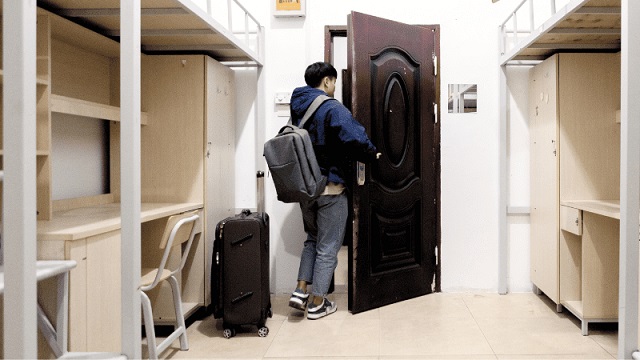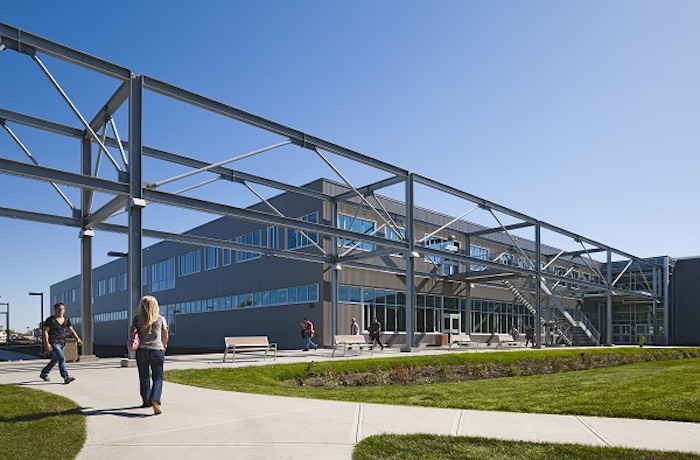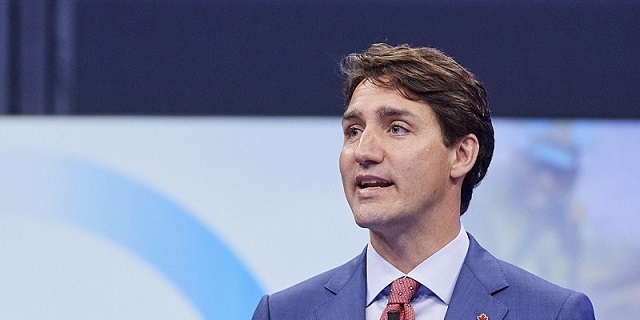Education
Bad student visa policy is no solution for bad student visa policy

From the MacDonald Laurier Institute
By Ken Coates
Making matters worse, a Statistics Canada report released in November of 2023 found that the number of postsecondary students actually enrolled at Canadian Universities was 20% to 30% smaller than the total number of individuals with international student visa’s.
Post-secondary education is in turmoil, thrust into the headlines by the Government of Canada’s decision to cut back on international student visas and work permits. The near panicked response by colleges and universities across the county has attracted attention. The federal decision is poor public policy, with flawed timing, significant negative impacts, and potentially serious long-term implications. But the ‘solutions’ implemented in January 2024 are a classic example of using bad policy to address bad policy. The fallout from this mélange of policy decisions could severely damage Canadian post-secondary institutions and the Canadian economy.
Governments, colleges, and universities have come to rely on international students, now numbering close to 1 million in Canada, particularly their tuition fees and the money that they bring into the country. The tuition fee revenues freed governments from the obligation to provide adequate funding to post-secondary institutions. Colleges and universities, for their part, used international student funding to avoid difficult, painful decisions related to the level of provincial support (the territories are not strongly affected by these processes).
The current controversy reflects more than a decade of poor and ineffective federal policies. Canada opened the gates for immigration, reaching unprecedented levels of refugees, formal immigrants, and hundreds of thousands of international students. Making matters worse, a Statistics Canada report released in November of 2023 found that the number of postsecondary students actually enrolled at Canadian Universities was 20% to 30% smaller than the total number of individuals with international student visa’s. Pointing to significant abuse of the study permit system, the report states, “It is unclear whether [the international ‘students’] stayed in Canada and, if so, what their main activities were.”
Our rapidly rising population is now blamed, not always accurately, for a serious national housing shortage and sky-rocketing prices, particularly in the major cities. The international student debate highlights the shocking shortcomings of the nation’s approach to housing and the absence of a thoughtful plan for population growth and rapid urbanization.
Bad federal policy is more than matched by poor provincial decisions, particularly in Ontario. The Liberal and Progressive Conservative administrations in Ontario have underfunded colleges and universities, dramatically so, relative to the other provinces and territories. Frozen tuition fees only added to institutional fiscal challenges. Several provinces, again led by Ontario, doubled down by authorizing many for-profit private colleges, most operating in league with public universities and colleges, to recruit international students. At the provincial level, the influx of international students, coupled with high tuition fees, masked the deficiencies of provincial funding, leaving underlying financial challenges unaddressed.
Colleges and universities had bad policies of their own. Without the government funding to meet their salary, administrative and capital costs, post-secondary institutions became addicted to international student fees, the crack cocaine of advanced education. Dozens of colleges and universities, enrolled thousands of international students, feeding the bottom line but increasing the reliance on international students and high tuition fees. They assumed, over-optimistically, that the steady flow of international students would never slow, let alone stop. They are now paying the price for that miscalculation.
Some institutions, particularly small institutions in northern and small-town locations, eve established satellite facilities in big cities to capitalize on strong student demand and to supplement small and stagnant enrollments on the home campus. International students and satellite operations were lifelines for institutions that would otherwise be in severe difficulty.
The Government of Canada’s response to the convergence of multiple bad policy streams consists of additional bad policy decisions. International student visas have been slashed by 35% and student-friendly work permit arrangements have been cut back dramatically. Canada’s once wide-open doors for international students have been partially closed. A carefully cultivated reputation for being receptive to foreign students has been degraded, if not dismantled, in one quick federal move.
The federal policy, announced with seemingly little coordination with provincial authorities and institutions, is a plainly political move, an urgent step taken by a Liberal government reeling in the polls. The decision was released in January 2024, at a key stage in the international student cycle. Colleges, public and private, are vulnerable to dramatic shifts in enrollment and they now face catastrophic losses of income. The implications go much further. Residences will want for students and employers of the eager international students will struggle to find replacements. Many college and university faculty and staff, particularly vulnerable short-term and sessional workers, will likely lose their jobs. And the national economy will lose out on a big portion of the billions of dollars spent annually by the international students.
The problem has been years in the making. The government may have been trying to make up for lost time but the hasty federal decision has already had an impact. Colleges and universities are already reporting sharp drops in applications. The message that Canada is no longer friendly for international students is out globally. The damage to student enrollment might be greater than anticipated.
A more appropriate approach would have been to announce a gradual reduction, starting in 2025, giving the colleges and universities time to adjust to a potential fiscal disaster. Another sensible alternative could have been to take aim at the abuse of the student visa system and to ensure those who entered the country under a study permit were actually enrolled in and attending classes. Bad policy often comes from knee-jerk reactions to political processes; good policy takes careful thought and, often, time.
Canada’s large international student recruitment industry brought billions of dollars into the Canadian economy. Thousands of students worked while they studied and made successful transitions to permanent resident status. Many people who came to Canada as high fee-paying students have become Canadian citizens and taxpayers. The students followed the rules, as did the colleges and universities that capitalized on clear and long-standing government policy. The federal and provincial policies may have been poorly designed and inappropriate, but governments set the parameters and expectations and shouldn’t punish others for their shortsightedness.
Bad policy, to be succinct, is no solution for bad policy, but that is what is happening to international student education in Canada.
Ken Coates is a distinguished fellow and director of Indigenous affairs at the Macdonald-Laurier Institute and a professor of Indigenous governance at Yukon University.
Education
Schools shouldn’t sacrifice student performance to vague notions of ‘equity’

From the Fraser Institute
According to a new study published by the Fraser Institute, if Canada wants to remain competitive with emerging economies around the world, we must increase our math, science and reading scores—and not simply pursue high levels of “equity and inclusion” as the primary goal for our schools.
Indeed, highly equitable and inclusive schools—with declining PISA scores, as is currently the case in Canada—do a disservice to students and society at large.
Why? Because higher test scores translate into greater “knowledge capital”—that is, the full body of knowledge available to an economy—and boost economic growth (and, incidentally, the tax revenues that fund our schools).
Indeed, the goal should be equitable access to a quality education. And the most realistic and meaningful way to measure student progress is through PISA tests, which every three years assess the performance of 15-year-olds worldwide in core subjects of math, science and reading rather than the limited curriculum objectives used in provincial testing, which can only show progress or decline within individual school systems. In today’s world, where competition is truly global, we must know how our students and schools perform compared to their peers in other countries, especially the “Asian Tigers” of Hong Kong, Korea, Singapore and Tiawan whose rapidly growing economies have been driven by rising PISA scores.
Obviously, countries with higher test scores can teach other countries how to improve—although there are limits and some traps here. Attempting to cut and paste Singapore’s or Korea’s much more meritocratic systems of highly competitive student assessment and selection would be impractical and impolitic in Canada. Even so, policymakers should consider reinstating more meaningful meritocratic norms in Canadian schools to encourage and recognize academic achievement. Nothing succeeds like success, except recognized and rewarded success.
Closer to home, other provinces could benefit from considering why Quebec is such a stellar performer in math and why Alberta has the highest overall PISA test score average of all provinces.
But fair warning, recent attempts at school improvement in Canada show that top-down one-size-fits-all changes—including extending compulsory attendance, reducing average class size and tinkering with course content—have had little positive effect on student performance, although they may please teacher unions. If policymakers want to achieve more equitable success for more students, they should introduce more flexibility, school autonomy and choice into our top-heavy centrally regulated school systems. In this respect it may be no accident that the three highest performing, mid-spending provincial K-12 education systems (Alberta, Quebec and Ontario) offer relatively high levels of school choice, although of quite different kinds.
Equity and inclusion are noble goals, but they shouldn’t interfere with student progress. There’s too much at stake, for students and the country.
Author:
Alberta
Expansion planned for Centre for Innovation in Manufacturing at Red Deer Polytechnic

Investing in innovation at Red Deer Polytechnic |
Alberta’s government is expanding student capacity and creating a modern learning environment at Red Deer Polytechnic that will help graduates succeed in the economy of tomorrow.
To support emerging opportunities for students, Alberta’s government will invest $12.9 million to expand the Centre for Innovation in Manufacturing Technology Access Centre (CIM-TAC) at Red Deer Polytechnic (RDP). CIM-TAC is an applied research and innovation centre that gives companies access to state-of-the-art prototyping and manufacturing equipment, along with a multi-disciplinary team with the expertise to turn brilliant ideas into market-ready products.
As Alberta’s economy grows and diversifies, job creators will increasingly seek employees with the skills required to work in advanced manufacturing.
Construction will begin in early 2025 and will increase the centre’s applied research, education and training capacity. The expanded CIM-TAC will grow to provide work-integrated learning opportunities for an estimated 450 post-secondary students and training through workshops and events to an additional 2,000 students annually by 2030. Additionally, more than 500 junior and senior high school students will take part in dual credit programs at the CIM-TAC.
“Investing in this expansion of CIM-TAC will give students at RDP access to cutting-edge technology and skills to succeed in the economy of tomorrow. The strategic investments we’re making in Budget 2024 are part of a forward-looking path to support the goals of our post-secondary institutions, grow Alberta’s economy and create jobs.”
“The expansion will allow Alberta-based manufacturers across multiple sectors to have greater ability to develop, test and scale their ideas. Students will be engaged at the forefront of made-in-Alberta technologies and manufacturing solutions.This investment will help meet high demand from entrepreneurs and industry for applied research and will take the facility beyond its current capabilities to become an advanced technology training and hands-on learning centre.”
“This expansion project will build on the CIM-TAC’s 15 years of success and leverage the centre’s industry partnerships and manufacturing expertise to provide even more capacity for applied research, as well as education, training and work-integrated learning opportunities for students. We thank the Government of Alberta for this investment that will benefit not only RDP students and researchers, but also the entire central Alberta region and its critical industries like health care, agriculture, energy and construction.”
“Manufacturing and advanced manufacturing are driving job-creation, economic growth and made-in-Alberta solutions that improve the lives of people around the world and right here at home. The funding to expand RDP’s CIM-TAC is an investment that will allow Alberta companies greater access to the tools, technology and next generation of skilled talent that will allow our industry to solve real-world challenges, develop better products and ultimately increase productivity.”
Quick facts
- The expansion of CIM-TAC at RDP will support a variety of sectors through advanced manufacturing capabilities, including energy innovation, transportation, aviation and agriculture. The centre will also support RDP’s future expansion into more medical device manufacturing and health-care innovations to support both patients and providers.
- RDP’s expansion of the CIM-TAC will grow the facility’s footprint from 15,000 square feet to 25,000 square feet.
- The CIM-TAC currently houses $7.6 million of advanced manufacturing equipment.
- In 2022, RDP attracted more than $2 million in applied research investment. RDP also completed 64 projects for 57 companies and participated in more than 1,300 engagements with industry partners.
- Since the CIM-TAC’s inception in 2009, RDP has supported more than 300 industry partners (including repeat clients).
-

 Brownstone Institute18 hours ago
Brownstone Institute18 hours agoMedical Elites’ Disgrace Over Ivermectin
-

 National16 hours ago
National16 hours agoDespite claims of 215 ‘unmarked graves,’ no bodies have been found at Canadian residential school
-

 Brownstone Institute11 hours ago
Brownstone Institute11 hours agoThe WHO’s Proposed Pandemic Agreements Worsen Public Health
-

 John Stossel5 hours ago
John Stossel5 hours agoProtecting Free Speech: The Early Warning Signs From Around The World
-

 COVID-198 hours ago
COVID-198 hours agoTrudeau’s public health agency recommends another experimental COVID booster
-

 Health9 hours ago
Health9 hours agoTHE WPATH TAPES: Behind-The-Scenes Recordings Reveal What Top Gender Doctors Really Think About Sex Change Procedures
-

 COVID-1912 hours ago
COVID-1912 hours agoThe New York Times Admits Injuries from COVID-19 Shots
-

 Automotive23 hours ago
Automotive23 hours agoElectric vehicle mandates mean misery all around




